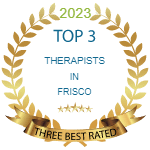Imagine becoming so overwhelmed by immense beauty that you experience hallucinations and physical symptoms. This rare phenomenon, called Stendhal Syndrome or Hyperculturemia, affects some individuals exposed to concentrated volumes of significant artwork.
What is Stendhal Syndrome?
It, also called hypercupremia, is a rare reaction some people have to concentrate on exposure to immense beauty in art. It involves physical and emotional symptoms like dizziness, confusion, and even hallucinations.
How Rare is it?
Though the exact prevalence is unknown, estimates suggest that 1 in 10 visitors to famous art sites like the Uffizi Gallery may experience it annually.
Causes of Stendhal Syndrome
Research indicates a genetic predisposition to high empathy, travel fatigue, and deep immersion in meaningful art can provoke Stendhal Syndrome.
Symptoms of Stendhal Syndrome
Symptoms range from anxiety and rapid heart rate to temporary confusion, hallucinations, and fainting when overwhelmed by beauty.
Why Does Art Make People Cry?
Profound art evokes emotion. For some sensitive viewers, the depth of meaning applied to masterpieces provokes intense reactions crossing the threshold into Stendhal Syndrome.
Treatment Options for Stendhal Syndrome
Compassionate support like coping strategies, grounding techniques, and therapeutic advice can help manage it. Specialists provide individualized care.
Harness Your Breath
When overwhelmed, focus on taking deep, calming breaths to counteract dizziness and anxiety. Carry grounding objects and retreat to a safe space.
Living with Stendhal Syndrome
Understanding your neurological sensitivities allows you to harness assets like creativity while establishing healthy boundaries. Define your limits and take required breaks when exposed to triggering environments.
Support for Managing Stendhal Syndrome
If you experience it compassionate support tailored to your needs can help. Our counselors at Kazmo Brain Center provide:
- Coping strategies for highly stimulating environments
- Grounding tools to manage sensory overload
- Therapeutic advice for establishing boundaries and self-care
Takeaway
Neurological diversity is beautiful. If art moves you to physical distress, leverage support and be gentle with your unique mind.






